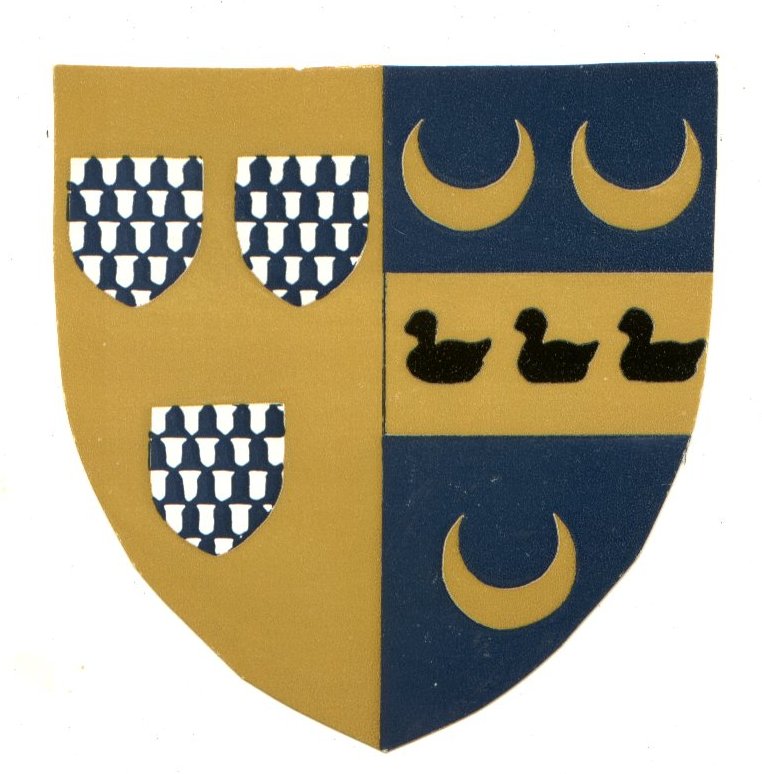A History of Eastry.
The Village of Eastry near Sandwich.
Kent Village of the Year 2005
There was a village here in Caesar's time and probably before then, and through
it ran the Roman road from Woodnesborough to Dover which can still be traced.
Eastry has a place in history for Egbert, King of Kent, had a palace there in
A.D. 664, probably on the site now occupied by Eastry Court, and it was there
that two young Princes, Ethelbert and Ethelred, cousins of the King, were
treacherously slain and buried in the King's Hall.
After the consolidation of the several independent kingships of Kent into one
monarchy, in A.D. 827, Eastry gradually ceased to be a royal residence, and in
A.D. 979 the reigning sovereign bestowed the palace and manor upon the monks of
Christ Church, Canterbury.
Thomas Becket was often at Eastry and in 1164 lay in hiding at the Court for
eight days waiting to escape in a fishing boat from Sandwich to France;
tradition has it that in this house there is a small secret chamber
communicating with the parish church.
The church is dedicated to the Blessed Virgin Mary and the lower part of the
Norman tower dates from late eleventh or early twelfth century; from the top of
this tower seventeen other churches can be seen.
Within the church is a fine chancel, a nave with north and south aisles and a
south porch, the aisles being prolonged on either side of the west tower.
There is much speculation as to the origin of the labyrinth of caves, off
Woodnesborough Lane, which are beautifully carved and extend in galleries to
nearly seven hundred feet; these caves may have been used for secret worship in
times of religious persecution and were possibly the grain storage chambers for
Britain.
Longpré Les Corps Saints
Even at the end of the twelfth century,
the hamlet of Longpré Les Corps Saints had been inhabited for a long time. In
the Merque quarry there are still traces of archaeological findings in stone
from the Abbevillien and Acheleen ages and in potteries from Danbian age.
Longpré belonged to Aléaume de Fonaines,
who was sent by Philippe Auguste on the third crusade in 1190. He took part in
the capture of Saint Jean d’Acre in 1191 and won fame in the taking of
Constantinople on April 13th 1204
Before leaving the crusades he built a
magnificent church in Longpré where in 1190 he founded with the approval of Mgr
Thibaud, the bishop of Amiens, the first of the five chapels which were to be
added in later years.
Aléaume de Fontaines’ valour earned him
the prize of one of the most valuable set of relics ever brought to the Western
world. He put them in a shrine and confided them to his chaplain Wilbert.
Wilbert arrived back in Longpré on 4th August 1205. The arrival of
holy relics gave rise to solemn services which the people, summoned by the sound
of trumpets, also attended. And so it happened that the gift of these relics, of
which there were about 116, gave our village, its name.
As it was not protected, the village was
often pillaged, mainly during the 100 years war. It was completely destroyed by
the bombings in June 1940 and yet was restored without the aid of modern
materials. Longpré is now a new, lively and important village. In its restored
church (complete except for the splendid spire which once stood erect upon its
steeple) are tombs of the Lords of Fontaines and a few valuable relics.
For a time Longpré retained its famous
pilgrimage of September 8th each year in which a grand procession of
the relics was mounted. It is hoped that this celebration will resume its
splendour in the near future.
On July 13th 1773 after a
long history, the landed properties of the noblemen of Longpré Les Corps Saints
were sold in the presence of the king’s notaries to Sir Jean Francois, Marquis
de Louvencourt, a former officer in the King’s infantry regiment. This last Lord
of Longpré died in 1781 and was buried in the Cathedral grounds alongside his
predecessors, the former Lords.
In memory of these two famous Lords,
Longpré put their emblems on its coat of arms. One half of the coat of arms is a
reproduction of Aleaume de Fontaines’ arms, the first Lord, while the second
half depicts the Marquis de Louvencourt’s arms, the last Lord.
The Lakes, known as “Che z’intailles”
were dug manually in order to extract peat, which had long been the principal
source of heat in the region.
"It is to the toil of these workers that
the region owes its charm and the current pleasure of being able to fish and
hunt wild fowl."




